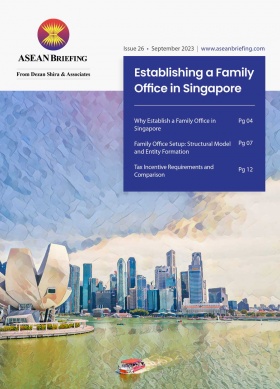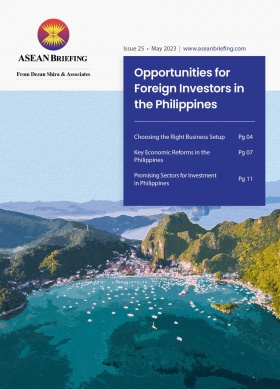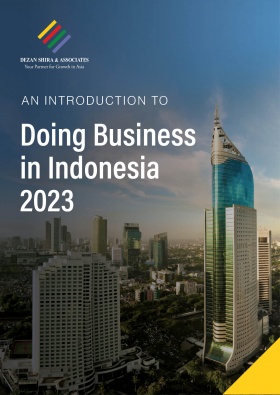Exploring Friendshoring: Shifting Operations in Asia and China+1
In an era marked by increasing globalization, geopolitical tensions, and shifting economic landscapes, businesses worldwide are constantly evaluating their strategies to ensure resilience and sustainability. A relatively new concept that has gained attention in recent years is “friendshoring” – a strategic approach to offshoring or outsourcing that prioritizes countries with which a company’s home nation shares amicable diplomatic, economic, or trade relations.
Amid increasing trade and political tensions and China’s rising labor costs and long-term demographic shift, a growing number of companies are diversifying their China business by moving operations to other countries, in particular for “sensitive” sectors. However, China still offers myriad strategic advantages, such as comprehensive supply chains, highly developed infrastructure, and a wealth of talent, expertise, and know-how. Moreover, China remains one of the world’s biggest consumer markets, which will continue to attract companies from around the world.
For these reasons, companies with an existing presence in China are unlikely to abandon the market entirely. Rather, many investors are choosing to supplement Chinese operations with low-cost inputs sourced from production facilities in markets such as Vietnam and Indonesia, in an effort to diversify operations and minimize risks of trade and supply chain disruption. While the structures of these operations differ greatly depending on the country in question, this production model has become widely known as “China+1”.
The countries that are set to benefit are typically places that offer low-cost operations and labor, but that also have relatively developed infrastructure and supply chains that are integrated with the wider region and the end market. For companies that are looking to keep operations in Asia, the list of candidates includes Malaysia, Vietnam, Indonesia, and India, among others.
While these countries offer low-cost alternatives to China, markets such as South Korea and Japan may also be ideal destinations for high-value production and technological innovation, with Western countries, in particular, being able to benefit from close trade and political ties with their home countries.
In this article, we look at the possible destinations for friendshoring, focusing on the relationships of key Asian countries with the US and Europe.
|
US Trade and Investment with Key Markets |
|||
|
Country/region |
Bilateral trade with US (2022) |
US FDI stock (2021) in country/region |
Trade and investment agreements |
|
ASEAN |
US$505.8 billion (excluding Cambodia, Laos, and Myanmar)
|
US$40.2 billion
|
None |
|
Vietnam |
US$138.8 billion
|
US$2.7 billion
|
US-Vietnam TIFA
|
|
Malaysia |
US$72.9 billion
|
US$12.5 billion
|
US-Malaysia TIFA
|
|
Indonesia |
US$44.4 billion |
US$15.7 billion |
None |
|
India |
US$119.42 billion |
US$45.4 billion |
None |
|
South Korea |
US$187.5 billion |
US$38.1 billion |
US-South Korea FTA |
|
Japan |
US$230 billion |
US$118.8 billion |
US-Japan FTA for Critical Minerals |
|
China |
US$690.6 billion |
US$118.2 billion |
None |
Source: US Department of State, US Census Bureau, UNCTAD
|
EU Trade and Investment with Key Markets |
|||
|
Country/region |
Bilateral trade with EU (2022) |
EU FDI stock (2021) in country/region |
Trade and investment agreements |
|
ASEAN |
US$290.4 billion
|
US$370.3 billion (2020)
|
ASEAN-EU Cooperation Agreement |
|
Vietnam |
US$68.7 billion
|
US$27.8 billion (2022)
|
EVFTA |
|
Malaysia |
US$53.8 billion
|
US$30.4 billion (2021)
|
None |
|
Indonesia |
US$34.8 billion |
US$21.6 billion (2021) |
None |
|
India |
US$122 billion |
US$91 billion |
EU-India Cooperation Agreement |
|
South Korea |
US$139.6 billion |
US$69.7 billion (2021) |
EU-South Korea FTA |
|
Japan |
US$149.6 billion |
US$89.6 billion (2021) |
EU-Japan Economic Partnership Agreement |
|
China |
US$905.7 billion |
US$246.4 billion (2021) |
EU-China Trade and Cooperation Agreement |
Source: Eurostat, UNCTAD
Reshoring to countries in ASEAN
Some of the countries that stand to benefit the most from friendshoring or a China+1 strategy are the 10 ASEAN countries, as they have the advantage of providing a lower-cost environment and being part of multiple multilateral trade treaties, which facilitate trade in goods.
These treaties include the China-ASEAN FTA, which eliminates tariffs on the majority of goods traded between China and ASEAN countries. Meanwhile, the Regional Comprehensive Economic Partnership (RCEP) aims to remove tariffs on 90 percent of goods traded between member countries over the next 20 years. The treaty currently has 14 active member countries—the 10 ASEAN countries except Myanmar, plus China, South Korea, Japan, Australia, and New Zealand.
The RCEP will motivate more investment through the China+1 strategy to lower-cost members of the FTA, such as Malaysia, Indonesia, and Vietnam, for more labor-intensive processes, such as in garment manufacturing.
Through these treaties, companies seeking to reshore operations to countries in Southeast Asia can continue to enjoy the benefits of integrated supply chains. The regional trade deals can enable them to continue sourcing materials and components from China cheaply and with fewer delays. In addition, the treaties also allow companies easier access to more markets. This includes higher-cost markets like Japan and South Korea, as well as the large consumer bases in fast-growing economies like Malaysia and Indonesia.
Looking at the possible destinations in more detail, Indonesia, Malaysia, and Vietnam stand out as ideal candidates among the ASEAN 10 member countries—due to their large populations, developed industries and supply chains, and high growth potential, as well as friendly relations with the US and Europe.
Indonesia
Indonesia is the most populous country in Southeast Asia and the fourth most populous country in the world. It is also a fast-growing economy, with Standard Chartered Bank projecting the country’s economy to grow from US$4.2 trillion in 2020 to US$10.1 trillion by 2030 to become the world’s fourth largest economy in terms of purchasing power parity.
Indonesia’s government has also been actively working to improve the business environment for foreign investors and has established several special economic zones (SEZs), modeled after those in China, that will provide a beneficial environment for the development of key industries.
The SEZs are designed to maximize the ready availability of local resources and cater to upstream and downstream industries for specific sectors, such as tourism, data centers, and logistics. Foreign companies may also be able to enjoy various fiscal and non-fiscal incentives in these zones, such as facilitated immigration processes, corporate income tax reductions, and exemptions on import duties and excise duties, among many others.
Malaysia
Malaysia’s strategic geographic location in Southeast Asia makes it an ideal gateway to regional markets for companies seeking to expand their presence in Asia. Its proximity to major Asian economies, such as Singapore and Indonesia, facilitates efficient distribution networks and easier access to growing consumer bases.
The country has a well-established infrastructure, including modern ports, transportation networks, and industrial parks, which can significantly reduce logistical challenges and costs associated with reshoring. Malaysia’s stable political environment and robust legal framework provide a conducive business environment, ensuring security and predictability for investors.
Malaysia’s highly skilled and educated workforce is a critical asset. The nation’s labor force is proficient in various industries, from electronics and automotive to aerospace and medical devices, enabling companies to benefit from a readily available pool of talent.
Malaysia may also be considered a “friendly” country due to its stable and constructive diplomatic relations with the US and Europe, as well as strong trade and investment ties. The US is Malaysia’s third largest trading partner after China and Singapore and the largest source of FDI.
Malaysia has also been identified for its potential in electronics and semiconductor manufacturing. In May 2022, the US and Malaysia signed a Memorandum of Cooperation (MOC) in order to create “resilient, secure, and sustainable semiconductor supply chains.” The MOC seeks to promote investment in the semiconductor supply chain.
Vietnam
Vietnam is emerging as one of the top destinations for companies seeking to diversify their investments from China. Its proximity to China, lower costs of labor and land, and young workforce make it an ideal destination for a China+1 strategy, in particular for sectors such as electronics manufacturing.
Vietnam is also already home to an established manufacturing industry with relatively mature infrastructure and a skilled workforce, which helps to streamline the transition from China and ensure consistency in production.
Vietnam has a competitive and relatively low-cost labor market compared to China. In 2022, the monthly minimum wage in Vietnam ranged from US$140 to US$202 depending on the region, compared to US$197 to US$370 in the Chinese mainland.
The two countries’ supply chains remain deeply integrated. In 2022, Vietnam’s imports into China reached US$117.87 billion. This means that reshoring operations to Vietnam would not mean cutting off from China, as many materials and components would still be Chinese-sourced.
European companies can also benefit from the EU-Vietnam Free Trade Agreement (EVFTA), which came into force on August 1, 2020, and eliminates almost 99 percent of customs duties between the EU and Vietnam. According to Vietnam’s Ministry of Planning and Investment (MPI), the EVFTA is expected to help increase Vietnam’s exports to the EU by 42.7 percent by 2025.
The US has been a strong advocate for Vietnam’s potential as a destination for friendshoring, in particular for strategic industries, such as semiconductors. During his recent state visit to Vietnam, President Joe Biden and General Secretary Nguyen Phu Trong announced the US-Vietnam Comprehensive Strategic Partnership. Under this partnership, recognizing “Vietnam’s potential to play a critical role in building resilient semiconductor supply chains”, the US will support the development of Vietnam’s semiconductor industry, as well as electronics manufacturing more broadly.
Reshoring to India
India stands to benefit hugely from reshoring trends as the country seeks to significantly develop its manufacturing industry.
With its vast and diverse market, burgeoning middle class, and rapidly growing consumer base, the country makes it an attractive destination for companies looking to tap into a substantial domestic market while reducing their reliance on exports.
India is already beginning to attract foreign manufacturers, in particular electronics. India’s Ministry of Electronics and Information Technology (MeitY) anticipates that the electronics manufacturing sector in India will reach a value of US$300 billion by 2026, up from US$75 billion in 2022. Apple has expressed its intentions to expand its sourcing efforts in India, while Google Pixel is reportedly considering shifting a portion of its device production to the country.
The country also offers a large and skilled labor force, including engineers, technicians, and workers with expertise in various industries, such as pharmaceuticals, automotive, and electronics. The availability of a skilled workforce helps ensure a smooth transition when reshoring operations to India.
Furthermore, India’s recent economic reforms and improvements in the ease of doing business have created a more favorable investment climate. Tax incentives, streamlined regulatory processes, and trade agreements have made it easier for companies to establish and expand their operations in the country.
India also benefits from relatively strong and stable ties with Western countries, and the US in particular. In June this year, the US welcomed Indian Prime Minister Narendra Modi on a four-day state visit, which was recently reciprocated by President Joe Biden. These visits led to a series of commitments between the two countries, including deepening collaboration in key areas, including “scientific and technological research collaborations in biotechnology and biomanufacturing innovations”, as well as academic and industrial collaboration in high-tech areas, including semiconductor research, next-generation communication systems, cyber-security, sustainability and green technologies, and intelligent transportation systems.
The two leaders also recommitted to promoting “technology sharing, co-development, and co-production opportunities between Indian and US industry, government, and academic institutions”.
Reshoring to Japan and South Korea
Whereas Japan and South Korea are considerably more expensive destinations for the reshoring of manufacturing, these countries’ close relationships with Western countries and highly skilled workforce still make them attractive destinations for reshoring.
Although many companies, especially those engaged in labor-intensive production, will not be in the position to move production from China to Japan and South Korea due to the high labor costs, the high level of education and training, as well as developed infrastructure and mature industry chains, make them a viable option for the production of high-value goods and services. Localizing production may also be beneficial for companies that are targeting the wealthy domestic consumer base.
Both countries are renowned for their advanced technological capabilities and innovation-driven industries. Their highly skilled workforces and a robust ecosystem for research and development also make them attractive to companies seeking to innovate on new products and technologies.
The two countries also have particular strengths in high-tech industries. For South Korea, in semiconductors and precision manufacturing, and for Japan, in automobiles, robotics, and biotechnology.
Japan and South Korea have close relationships with the EU and the US, as well as other Western countries. The EU currently has an active FTA with South Korea, eliminating tariffs on nearly all goods traded between South Korea and the bloc.
Are Western companies really moving out of China?
While there has been a lot of rhetoric on the benefits of friendshoring, it is worth analyzing to what extent this trend is currently happening, and how feasible it is to reduce reliance on China.
While it is possible for companies to reshore to other countries in Asia, the world’s overwhelming reliance on China for a broad range of raw materials and components means that moving operations to another country will not mean cutting China out of the global supply chain. As noted in a report from the Rhodium Group, “Because global value chains are so entangled with China, diversification will not necessarily result in a reduced reliance on Chinese inputs and suppliers in the short- to medium-term.”
The Rhodium Group also noted that, due to China’s dominance in industries such as manufacturing, “even substantial shifts” in companies’ manufacturing to other countries would not have a significant impact on China’s overall share of the industry. However, due to the comparatively small size of the industries and economies in the possible destinations of the reshoring, this shift “can trigger major economic, industrial, and logistical impacts on new destination countries”.
These findings suggest that friendshoring may do little to reduce companies’ overall reliance on China, at least in the near term. However, this does not mean that it is inadvisable for companies to restore some operations to other countries. For instance, it is telling that Chinese companies are increasingly also moving operations out of China, driven by both geopolitical tensions and increasing costs domestically.
The Chinese government, cognizant of the major shifts underway in China’s workforce, is also actively seeking to move China’s industry up the value chain, focusing more on high-end and advanced manufacturing, and relying upon the service sector and domestic consumption for long-term economic growth.
“As companies continue to move production and assembly operations to these markets, they will further build out supply chains locally. These countries should increasingly move up the value chain, with a growing amount of the input components being sourced locally and not from China” says Kyle Freeman, partner at Dezan Shira & Associates.
It is therefore perhaps inevitable that companies will choose to reshore in a lower-cost country as China moves towards becoming a service-oriented economy, its population ages and the workforce shrinks, and labor costs rise. However, China will likely maintain its competitiveness thanks to innovation in the manufacturing industry, its supply chain advantages, its large consumer base, and favorable access to multiple markets via bilateral and multilateral trade deals.
About Us
ASEAN Briefing is produced by Dezan Shira & Associates. The firm assists foreign investors throughout Asia and maintains offices throughout ASEAN, including in Singapore, Hanoi, Ho Chi Minh City, and Da Nang in Vietnam, in addition to Jakarta, in Indonesia. We also have partner firms in Malaysia, the Philippines, and Thailand as well as our practices in China and India. Please contact us at asean@dezshira.com or visit our website at www.dezshira.com.
- Previous Article Philippines and South Korea Sign Free Trade Agreement
- Next Article Investing in Indonesia: The 2023 Mid-Year Investment Report








